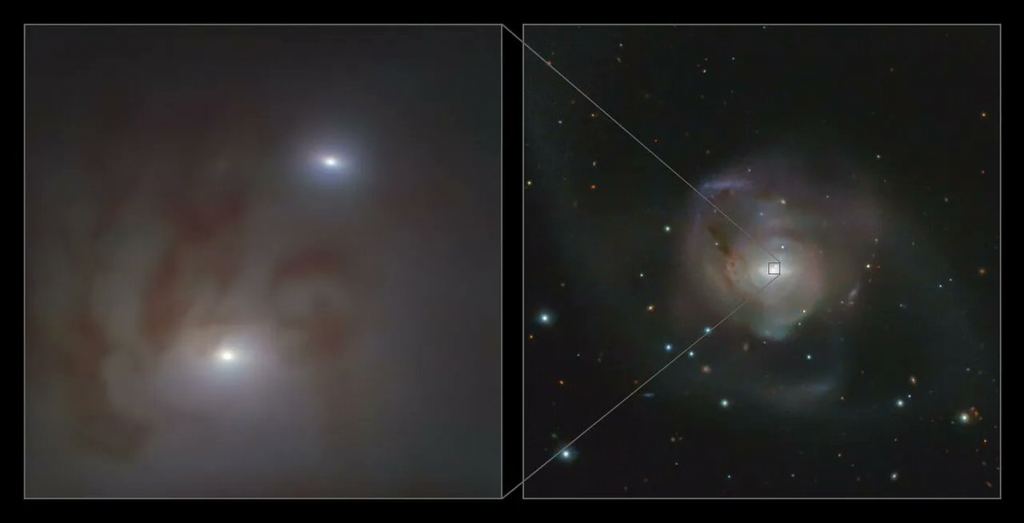
What a Mess. When the Milky Way and Andromeda Merge, it'll Look Like This
No need to panic, but the Andromeda Galaxy is barreling towards us. It is due to uncork merging with the our Milky Way Galaxy in a few billion years. From an outside observer, that process will very likely squint like this new picture captured by the Gemini South Observatory. This is NGC 7727, a peculiar galaxy in the constellation Aquarius, well-nigh 90 million light-years away. Two giant screw galaxies are merging, their gravitational interactions are hurling giant tidal tails of stars into the cosmos.
Astronomers believe the standoff that created NGC 7727 began over a billion years ago. Inside this mess and unconnectedness are pair of woebegone holes – one from each original galaxy. These two woebegone holes hold two records: 1. the closest supermassive woebegone slum pair to Earth and, 2. the closest together pair overly seen.
One of the woebegone holes measures 154 million solar masses and the other 6.3 million solar masses. They are approximately 1,600 light-years apart. Astronomers have unscientific that the two woebegone holes will sooner merge into one in well-nigh 250 million years. This will form an plane increasingly massive woebegone hole, and the standoff will emit violent ripples of gravitational waves wideness spacetime. Hopefully a future version of the LIGO (Laser Interferometer Gravitational-Wave Observatory) will be online so future astronomers can witness and record the event.
Even though the merger began long ago, the galaxy is still unauthentic by the impact. Those giant tidal tails are unexceptionable with young stars and zippy stellar nurseries. In fact, well-nigh 23 objects found in this system are considered candidates for young globular clusters. Astronomer say these collections of stars often form in areas where star insemination is higher than usual and are expressly worldwide in interacting galaxies as we see here.

Since the Milky Way and its closest neighbor Andromeda (a.k.a M31) are stuff pulled together in a gravitational dance, there will likely be similar events as seen in in NGC 7727. Some astronomers say it is likely the Sun will be flung into a variegated region of our galaxy, and Earth and the solar system will probably just go withal for the ride and are in no danger of stuff destroyed.
Wheee!
Gemini South is one half of the International Gemini Observatory operated by NSF’s NOIRLab and is located on Mauna Kea on the Big Island of Hawai’i.
 The Defence Blog
The Defence Blog